Add and subtract money amounts
Key Notes :
Understanding Money:
- Money is represented in different denominations (coins and bills).
- For example: coins in cents (1¢, 5¢, 10¢, 25¢, 50¢, 1 dollar) and bills (1, 5, 10, 20, 50, 100).
- Important to understand how to convert between cents and dollars: 100 cents = 1 dollar.
Adding Money:
- Align the decimal points (dollars and cents) when adding money.
- Start from the rightmost column (cents) and move left, just like adding regular numbers.
- Example:
$3.75 + $4.50 = $8.25
Add cents first (75 + 50 = 125), which equals 1 dollar and 25 cents. Write 25 cents and carry over 1 dollar. Then, add the dollars (3 + 4 + 1 carried over = 8).
Subtracting Money:
- Similar to addition, align the decimal points when subtracting.
- Start from the right (cents), borrow if needed (just like subtraction with larger numbers).
- Example:
$6.50 – $2.75 = $3.75
Subtract cents first (50 – 75 is not possible, so borrow 1 dollar = 100 cents). Then subtract (150 – 75 = 75 cents). Finally, subtract dollars (6 – 2 = 4).
Learn with an example
1) Subtract.
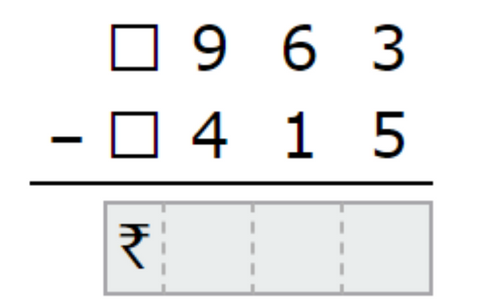
Subtract the numbers in each column. Remember to carry over.
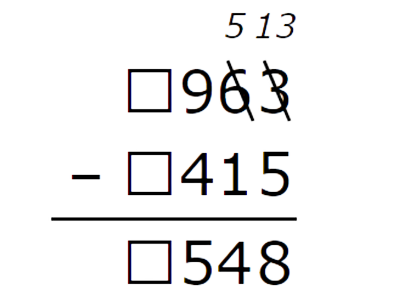
The difference is ₹548.
2) Subtract.
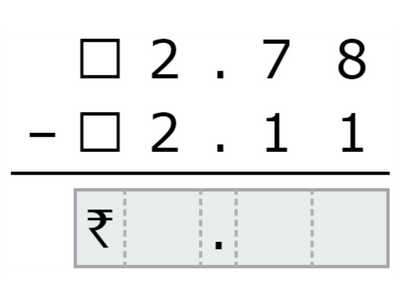
Subtract the numbers in each column. Write the decimal point in the difference.
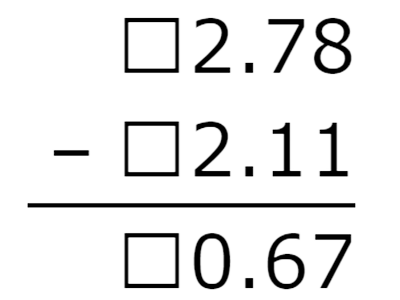
The difference is ₹0.67.
3) Subtract.
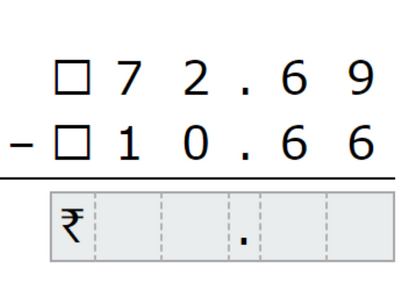
Subtract the numbers in each column. Write the decimal point in the difference.
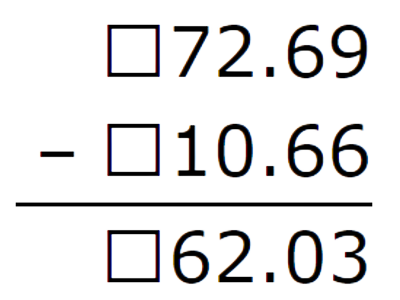
The difference is ₹62.03.
Let’s practice!🖊️

